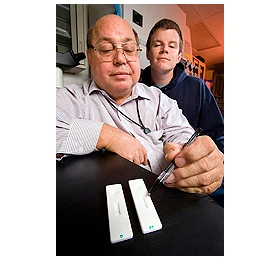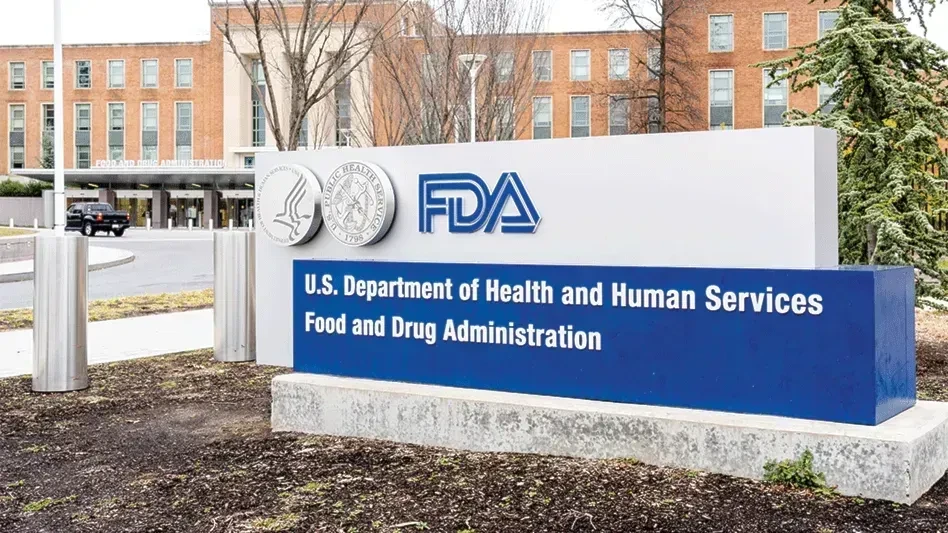
Botulism, the sometimes deadly illness commonly associated with botched home-canning or other stored-food mishaps, has a new face. According to U.S. Department of Agriculture (USDA) molecular biologist Robert M. Hnasko, botulism today is both a food safety and a homeland security concern because bioterrorists could — using the natural toxins that cause botulism — make everyday foods and beverages deadly. The nerve-damaging toxins, called neurotoxins, are produced by a common soil-dwelling bacterium, Clostridium botulinum, and several of its close relatives.
Hnasko works for the Agricultural Research Service (ARS), USDA's chief intramural scientific research agency.
Now, a handy test strip that Hnasko and his colleagues have developed may give homeland security and food safety officials a powerful tool to use against the toxins. When put to work as the basis of a field-ready test kit, the strip can provide results in less than 20 minutes. That makes it well suited for rapid, preliminary screening in the event of a bioterrorist threat, an outbreak of foodborne botulism in which the culprit food has not yet been pinpointed, or during other emergencies.
The strip fits snugly into a holder (technically a "lateral flow device") like those in pregnancy test kits for at-home use. Only a small amount of prepared sample is needed, and the results, shown on a color display, are easy to see and understand.
The strip is equipped with laboratory-built proteins, known as monoclonal antibodies, which bind exclusively to A- or B-type (serotype) botulinum toxins. Together, these types are responsible for more than 80 percent of all cases of foodborne botulism in the United States. ARS biologist Larry Stanker led the experiments that yielded the antibodies.
Using monoclonal antibodies in a lateral-flow device to detect botulinum toxins isn't new. However, the test that Hnasko and co-researchers developed, described in detail in a 2012 article in the Journal of Immunological Methods, is likely the first of its kind that can concurrently detect and differentiate the A and B serotypes.
Hnasko and Stanker collaborated in the experiments with microbiologist Jeffery A. McGarvey and technician Alice V. Lin, all with ARS in Albany, Calif., and with former Albany research associate Kathryn H. Ching.
The botulinum investigations, highlighted in the February 2014 issue of Agricultural Research magazine, support the USDA priority of improving food safety.
The scientists are continuing to seek collaborations with test-kit developers and manufacturers to expand the test strip's food safety, medical, and homeland security applications.
Latest from Quality Assurance & Food Safety
- AIB Appoints New Chair to Drive Food Safety Education and Research
- Multistate Salmonella Outbreak Linked to Sweet Cream Mini Pastries
- Dr. Emilio Esteban Leaves USDA for Mérieux NutriSciences
- USDA Confirms New Strain of Bird Flu in Nevada Dairy Cattle
- Tecnologico de Monterrey Develops Nutraceutical Corn to Address Global Food Crisis
- Eurofins Healthcare Assurance Launches GMP Certification Program for Dietary and Food Supplements
- Calbee America Launches California R&D Innovation Center
- PepsiCo Completes Acquisition of Siete Foods




